- Home
- Simon Winchester
The Men Who United the States: America's Explorers Page 29
The Men Who United the States: America's Explorers Read online
Page 29
By the time the soldiers got back to their bases and Ike returned to his desk at Camp Meade, Maryland, the seed of the idea of the Interstate Highway System had been planted. Today it is essentially complete, formally named the Dwight D. Eisenhower National System of Interstate and Defense Highways. Because exasperation is often the trigger of a solution, it can fairly be said that it was most probably in or near the town of North Platte, Nebraska, that the seed was first sown.
THE COLOSSUS OF ROADS
It may have been Ike’s idea, but it was one Thomas MacDonald who, a quarter of a century later, fashioned the billions of tons of concrete and steel in such a manner as to make the notion whole.
Thomas Harris MacDonald, who is a half-forgotten man today but whose unforgettable legacy was to give Americans of all stations the ability to cross their country by road at speed and with ease, was by all accounts not an easy man. He was diminutive, cocksure, thickset, proud, austere, always scrupulous and conservative in dress—he wore a tweed coat and patternless tie even while fishing or riding horses—and he demanded absolute respect from his social inferiors, from his colleagues at work, and from all within his household. He had his wife call him Mr. MacDonald and his brothers and sisters address him as Sir. The only hint of levity he permitted was allowing his staff to call him Chief. Woe betide anyone who during his entire adult life—he was born in 1881 and died in 1957—addressed him by his Christian name.
Tom (we can risk his ire today, perhaps) was born in Leadville, Colorado, the rough-and-tumble frontier town where Oscar Wilde once gave a lecture in a bar and famously saw a sign on the piano pleading with customers PLEASE DO NOT SHOOT THE PIANIST. HE IS DOING HIS BEST. It was the only rough-and-tumble time of MacDonald’s eventual seventy-six years. He was still a child when his father moved the family to the flatlands of Iowa and set up a modest business selling corn and cords of cut wood. They lived in a place called Montezuma, a tiny town so full of Protestant Irishmen immigrants that each July 12 they celebrated the 1690 victory over the Catholics at the Boyne, but otherwise so empty that the roads were uncared for, thick with mud from a soil of an almost velvet blackness, albeit rich and nutritious. Flat, frugal, fastidious Iowa shaped Thomas MacDonald. And it was after he had seen so many times his poor father’s difficulty driving his lumber truck or his corn cart through the winter quagmires to the nearest station of the Minneapolis & St. Louis Railroad that he vowed to learn the craft of building highways and eventually laid the groundwork for the Interstate Highway System, which he would not live to see.
His youthful interest coincided with the beginning of a keen public awareness of the state of America’s roads. The League of American Wheelmen was initially a cyclists’ lobbying organization. By the 1880s, the dangerous-looking velocipede had become hugely popular, soon replaced by the safety bicycle: $18 could buy you the freedom to tour the country—and if you were a woman, to do so in skirts and bloomers, a sport so liberating that Susan B. Anthony approvingly backed it. But the roads were so execrable that a hundred thousand bicyclists went to Washington to complain. There was little point in owning a set of wheels, they cried out in unison, if wheels could not be used.
Near the century’s end, pressure from the bicyclists was augmented by protest from a tiny but swiftly growing number of automobile makers, two of whom had been bicycle mechanics themselves, who set about their mission with the eagerness of poachers-turned-gamekeepers. They were brothers, Charles and Frank Duryea, and in 1893 they had slung a one-cylinder gasoline engine under the frame of an old horse wagon and driven it along the back streets of Springfield, Massachusetts—in the dark, so that if the machine broke down, no one would see. But it didn’t break (it didn’t brake, either, for the first model was not so equipped), and the Duryea Motor Wagon Company was swiftly founded, made fifteen cars, raced one of them creditably against a German Benz in a contest held on Thanksgiving Day in 1895, and helped spawn a new American business: making and selling automobiles. Ransom Olds and his Oldsmobile came next, then Henry Ford, the Model T, and mass production, and soon the sound of lobbying by the two-wheelers faded to a dull roar while that from the four-wheelers of the new automobile industry rose in a crescendo and became deafening.
In 1894, the American government seemed to be listening. Officials were sensitive enough to make the connection between roads and the needs of men like old Mr. MacDonald, who couldn’t get his goods from his farm in Montezuma to the railroad station. Buried deep within that year’s budget for the Department of Agriculture was an allotment of $10,000 to establish the modestly named Office of Road Inquiry. Though the federal government had been involved in road building since Jefferson’s time, this was the first proper road agency set up with an office and a staff. It had a simple mandate: “Get the farmer out of the mud.”
The officials did this in a most imaginative way. They assembled a number of trains; filled each with engineers and road-building equipment; sent them out to small, isolated towns throughout the country; and built small half-mile-long sample roads, for demonstration. They were known as object-lesson roads or seed roads, examples of what could and should be done. In the words of a senator who watched one of these Good Roads Trains pull into Lynchburg, Virginia, “titanic machines” spilled from the railroad cars, were cranked into life, and immediately began building a hundred feet or so of “good road over bad road.”
The results were predictable. Scores of local people would bring their bicycles or cars or farm trucks and would bump along through the ruts and mud pools until they reached the edge of the new-built seed road—and then sailed serenely across something that suddenly felt as smooth as velvet, as easy to ride along as if it had been made of glass.
To advertise the benefits of well-built and -maintained highways, the government dispatched trains, loaded with mechanized road-building equipment, to show distant communities how to construct them. The Illinois Central sent a train on a journey between Chicago and New Orleans, stopping every few miles to build half-mile sections of roads, to advertise how it could be done.
Meanwhile, over in Iowa, Thomas MacDonald had confirmed his interest, had refined his skills, and had acquired a job. Having once remarked that road building was “a calling of the greatest public responsibility” that mightily increased “the possibilities of enjoyment and happiness of life [more] than any other public undertaking,” he had gone to farm school in Ames to study engineering and had advertised his eagerness with sufficient energy to be handpicked on graduation to run a commission to study that state’s roads. He took to the job like a fury, riding for weeks at a time on horseback to the farthest corners of the state, advising on building techniques, sacking countless corrupt local officials, and ordering the paving of five hundred of the state’s six thousand miles of highways. In doing so, he rapidly came to the notice of men of influence in Washington.
By this time the Office of Road Inquiry had expanded and become the Bureau of Public Roads, still within the Department of Agriculture but now much larger and with a bigger budget. Its first two chiefs were lackluster timeservers, and the bureau had had little impact. It hardly managed to spend its $75 million budget, and during the time that MacDonald had been studying in Ames and then laboring to better the roadway system out in his tiny home territory, it had built less than twenty miles of new road in the entire United States. It clearly needed some ginger.
The bureau got it in 1919, when Thomas Harris MacDonald was plucked out of Iowa, and made its chief, a post he would hold on to like a limpet for the next thirty-four years.
His appointment came at a propitious moment in the nation’s history. The Great War was over and the troops were home. A period of prosperity had settled on the country; cars were being bought, and Henry Ford’s Model T began to be available. Dwight Eisenhower’s cross-country expedition had been concluded, its reports were out, and suggestions for road improvement were on every official table. Men had been crossing the country by car since a Vermont doctor improbab
ly named Horatio Nelson Jackson had done so on a bet in 1903. It took him sixty-eight days; it had taken a Colorado coal-mining cyclist five months, not much longer. Others followed their routes, and by 1919 it could almost be said that the unsigned, unmarked, unpaved, and unattended roads across America were beginning to be populated by a people suddenly aware of the possibilities.
An iron-willed, curmudgeonly martinet, Thomas “The Chief” MacDonald ran the U.S. Bureau of Public Roads from 1919 until his retirement in 1953, and wielded unprecedented influence with the seven presidents he served, in supervising the creation of the nation’s present highway system. As well as the 3.5 million miles of road built under his authority, he also oversaw the building of the Alaska Highway.
Now, with MacDonald at the helm, change started to settle on the highway system, change so profound that almost all of the details of America’s present highway system owe their beginnings to decisions made by this humorless martinet during his legendary and seemingly endless Washington career.
His initial achievements were prodigious. He persuaded the Treasury and Congress to release hundreds of millions of dollars and began a program of building roads financed directly by the government. They were all fine roads, though not overbuilt. He did not favor the idea of having them all surfaced with ten inches of concrete but instead believed they should meet the demands that traffic made upon them. He wanted them to be smooth, well graded, well drained. “My aim is this,” he said. “We will be able to drive out of any county seat in the United States at thirty-five miles per hour and drive into any other county seat—and never crack a spring.”
In 1925 he arranged for the country’s major roads to be given federally designated numbers that would extend beyond individual states, reducing the chaos of the existing randomly named, randomly signed roads and giving long-distance drivers—who that year had access to twenty million cars—the opportunity to stick with one road with its own number for a trip of many hundreds or even some thousands of miles.
The system he proposed was elegantly simple. North-south federal roads would have odd numbers; east-west, even. All signs on these roads would be the same: a plain white shield edged with black and painted with a black route number. The lowest odd number, Route 1, would be on the East Coast; the highest would be Route 101, now the maddeningly congested commuter corridor in California. So far as the ocean-to-ocean routes were concerned, Route 2 was at the north and Route 90 down near the Mexican border. Roads ending in the number 5 were major routes, as were those ending in zero, routes 30 and 40 becoming of legendary importance.
The most famous road of them all, originally known as the Great Diagonal Way, running between Chicago and Los Angeles, was given its eventual celebrated number as a result of a bitter argument involving a state—Kentucky—that was nowhere near it.
It is a droll tale. When MacDonald’s numbering system was announced, Kentuckians were mortified to see that they were going to get only the unmemorable highway number 62. Instead they wanted the big, grown-up number 60, which had first been allotted to the Chicago–Los Angeles highway. They felt that Kentucky should have 60, because 60 would bring business through its bluegrass counties, which had been bypassed by all other numerically notable roads. Its governor petitioned the stern Mr. MacDonald, saying the state wanted nothing of his nastily forgettable number 62.
Since the entire numbering arrangement required the unanimous concurrence of all forty-eight states, Kentucky’s petulance had to be addressed. The first plan was to give the diagonal highway the number 62 and give Kentucky 60, but the states through which the Chicago–Los Angeles road passed wanted nothing to do with the much-loathed 62 either. Stalemate.
Then MacDonald’s chief engineer in Oklahoma remembered that number 66 had not been claimed. If the Great Diagonal Way could be designated Route 66, then Kentucky could certainly have its way with US Highway 60. MacDonald agreed, Kentucky said yes, and the best-known highway in the Western world, 2,297 miles of star-dusted asphalt, was formally born. Route 66 remains today, but only just. John Steinbeck’s “mother road” is now a relic, ill repaired, half broken, and much diverted, scarcely traveled except by the curious, but still a beloved monument to that moment when the steely reserve of Thomas Harris MacDonald briefly let go, and he grinned.
The utopian idea of a paved paradise: this was what the National Highways Association believed would guarantee a prosperous future for America, and the organization lobbied intensely to win public support. Maps like this, produced in 1925, presented a vision for an interconnected and thoroughly asphalted America that was to be broadly realized within the following decade.
Matters became much more serious a decade later, toward the end of the Depression, when MacDonald was summoned to a meeting at the White House. He had been called in to see President Roosevelt, the fifth president under whom he had served, the man whose New Deal had—along with the European war—started to bring the long economic slump to its merciful end. Roosevelt had long been a highways man,* a keen supporter of all the various good-roads movements that had flourished in the country, and he had long admired MacDonald’s tenacity, foresight, and drive. But now, in 1937, it was fast becoming clear that even the existing new and numbered roads could not cope with the exponentially increasing number of vehicles. The Bureau of Public Roads simply had to do something extra.
President Roosevelt took MacDonald over to an Oval Office table where there was a large map of the United States. The president, a man given to big thoughts and sudden decisions, picked up a crayon and drew six broad lines on the map. Three of them crossed the country coast to coast; three more ran up and down the country, border to border. A while later, he drew two more north-south lines on the map, making a total of eight. To MacDonald he then essentially said that these eight roads, wide divided highways with limited access and without any intersections or stoplights, which would enable vehicles to travel for hundreds of miles at the highest of speeds, should be constructed to link America together properly, once and for all. How much will it cost? Where exactly should the roads go? And what will be their effect?
It would be twenty more years—World War II and unending domestic battles over budgets would intervene—before the first sod was turned. But this hastily drawn crayon-on-a-map plan of 1937—lost to history, sad to say—was the exact moment of origin for the Interstate Highway System, and Dwight Eisenhower, though renowned by association, had nothing to do with it. He had been the first to recognize the need, back in 1919. And in 1945, he famously saw in the autobahns of defeated Germany the kind of road that should be built. But he did not originate the roads that now bear his name; Roosevelt did. And once given that Oval Office directive, MacDonald and the staff at the Bureau of Public Roads began the planning immediately.
MacDonald did not agree with Roosevelt’s plan entirely. FDR wanted tolls; MacDonald did not (an argument he won, the roads eventually being financed by public money, much of it raised by a new tax on gasoline). FDR wanted the roads to help the future economy; MacDonald believed that roads should be built only where they were currently needed. The long winding strips of concrete that eventually drifted with apparent pointlessness across the unpopulated plains of North Dakota and the deserts of Nevada were proof that Roosevelt was right: such roads both provided work for local men and in time helped the local economy grow in other ways.
MacDonald and Roosevelt also disagreed about the projected size of the highways: MacDonald’s numbered highways had all been two-lane. FDR wanted his to be four-lane, divided, and in places even bigger than that. The president got his way.
The final triumphal results of MacDonald’s work, which would be completed by the hands of many others long after he had retired, came twenty years later, in June 1956, with the passage of the Federal-Aid Highway Act, the landmark legislation that finally approved the building of this vast new highway system. Dwight Eisenhower signed it with much enthusiasm and showmanship.
In September 1956, there t
hen appeared another MacDonald legacy—the plan. It was a hundred-page book of maps, with only three sentences of text, that was sent to every member of Congress, titled General Location of National System of Interstate Highways Including All Additional Routes at Urban Areas. The book’s cover was the color of butter; that is why this document, which laid out the exact directives for the building of the Interstates, immediately became known as the Yellow Book. It was the road-planners’ bible; it told everyone what to do and where to do it in the biggest public works program in the history of the world.
Within a year after the famous Yellow Book of 1955, with its map of the intended routes of the main Interstate Highway System, Congress had passed the legislation that set in train the greatest public works program in world history.
There would be forty-one thousand miles of highway—with the longest, I-90, running without a single traffic light the 3,020 miles between Seattle and Boston. Roads would climb as high as two miles above sea level in Colorado and fifty feet below by the Mexican border in Southern California. There would be fifty-five thousand bridges and tunnels, sixteen thousand exit and entrance ramps, and thousands of cloverleaf crossings—junctions where in time new kinds of hotels* and venues for refreshment and amusement would grow up, changing in no small way the face of the nation and the habits of all.
Most of the roads were brand-new, requiring the acquisition of enormous acreages of land. The construction would in places be brutally difficult. Bitter winters, deep swamps, high mountain ranges, vast deserts—all would be swept across by ribbons of an immense building experiment, the builders learning mile by mile, making it up as they went.

 The Surgeon of Crowthorne
The Surgeon of Crowthorne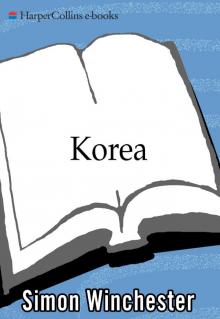 Korea: A Walk Through the Land of Miracles
Korea: A Walk Through the Land of Miracles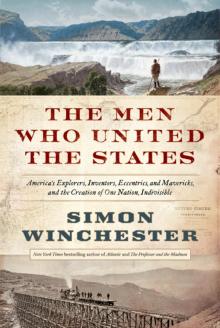 The Men Who United the States: America's Explorers
The Men Who United the States: America's Explorers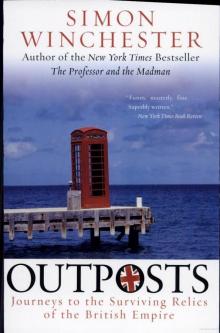 Outposts: Journeys to the Surviving Relics of the British Empire
Outposts: Journeys to the Surviving Relics of the British Empire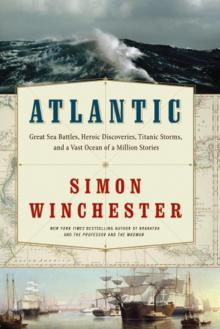 Atlantic: Great Sea Battles, Heroic Discoveries, Titanic Storms
Atlantic: Great Sea Battles, Heroic Discoveries, Titanic Storms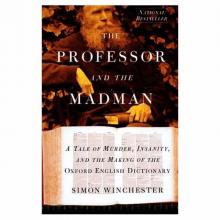 The Professor and the Madman: A Tale of Murder, Insanity
The Professor and the Madman: A Tale of Murder, Insanity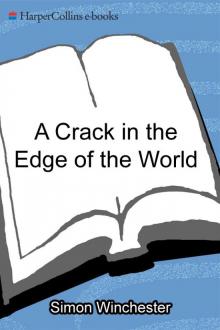 A Crack in the Edge of the World
A Crack in the Edge of the World The Perfectionists: How Precision Engineers Created the Modern World
The Perfectionists: How Precision Engineers Created the Modern World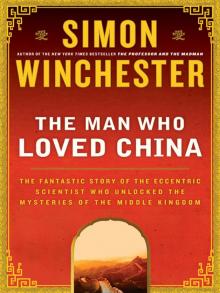 The Man Who Loved China: The Fantastic Story of the Eccentric Scientist
The Man Who Loved China: The Fantastic Story of the Eccentric Scientist The River at the Center of the World: A Journey Up the Yangtze
The River at the Center of the World: A Journey Up the Yangtze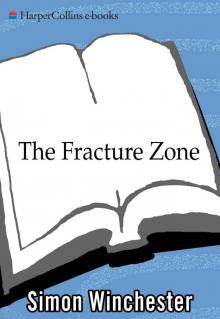 The Fracture Zone: My Return to the Balkans
The Fracture Zone: My Return to the Balkans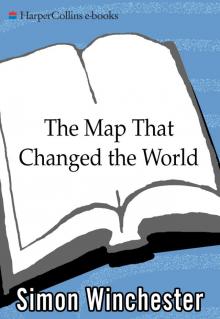 The Map That Changed the World
The Map That Changed the World Krakatoa: The Day the World Exploded
Krakatoa: The Day the World Exploded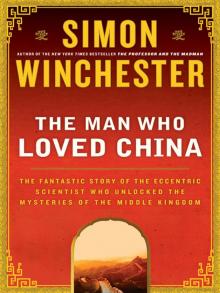 The Man Who Loved China
The Man Who Loved China The River at the Centre of the World
The River at the Centre of the World Bomb, Book and Compass
Bomb, Book and Compass The Perfectionists
The Perfectionists The Meaning of Everything
The Meaning of Everything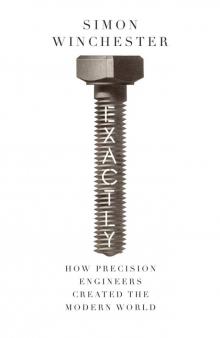 Exactly
Exactly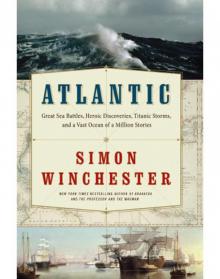 Atlantic
Atlantic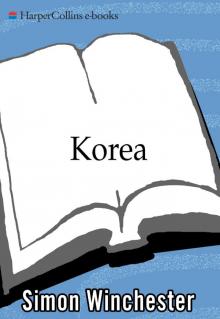 Korea
Korea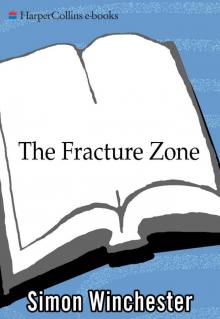 The Fracture Zone
The Fracture Zone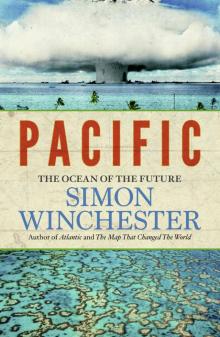 Pacific
Pacific Krakatoa
Krakatoa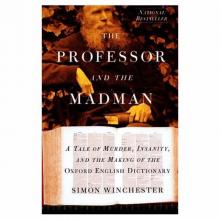 The Professor and the Madman
The Professor and the Madman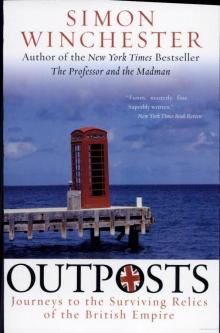 Outposts
Outposts